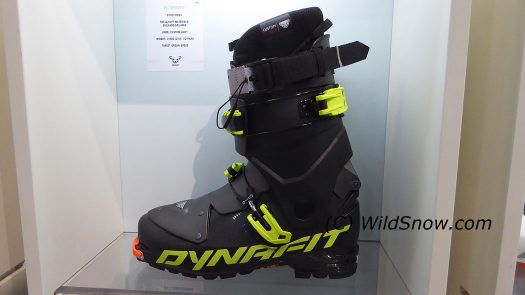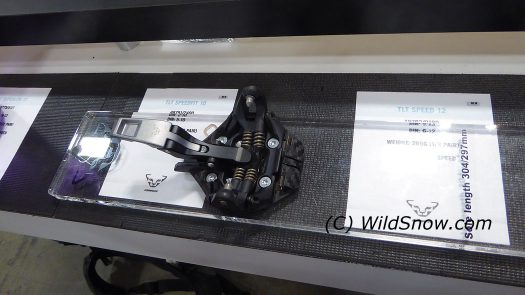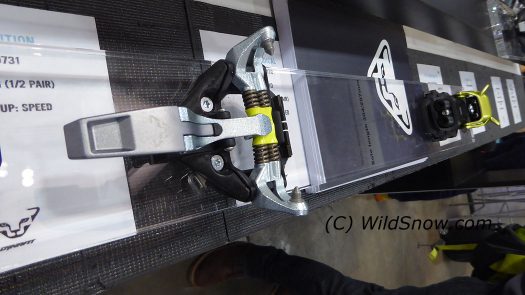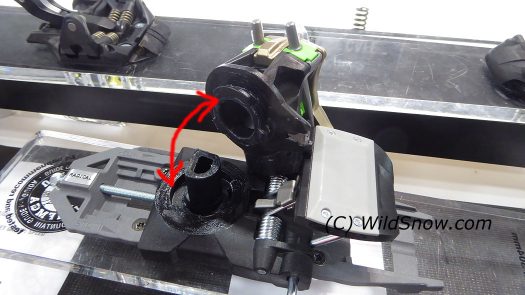The Snow Leopard always keeps you guessing. What will they do next? Revamp the ski line? New bindings? Respond to the greater “ski touring” market trends?
All of the above.
As I think I mentioned in a few prior blog posts, we’re delighted that Dynafit is addressing a new category they’re calling “Speedfit” or “Speed Fitness.” Idea being to provide gear such as boots and bindings oriented to uphilling at resorts mixed with the occasional moderate ski tour. Lower price points and simplicity for new users being the philosophy.
(Don’t worry, Wildsnow will not become “THE Resort Skinning Website.” We simply like this category because it’s part of the whole human powered ski touring picture. A viable sport needs entry points for newcomers, and this is a good one.)
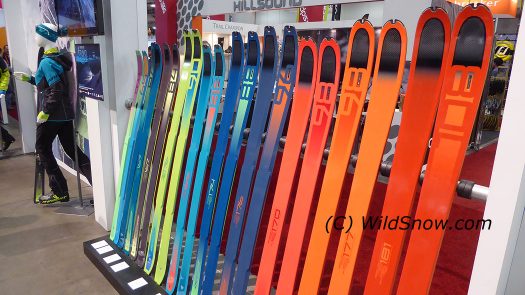
Dynafit ski lineup for 2017-2018 has a much more integrated look. Names are simplified, based on waist width. I suppose a list of all models should go here, will get that together. Meanwhile, know just about any width preference is covered. See post below for Coop’s impressions.
Near as I can tell, Speedfit boot is the most unique thing here, basically a TLT-6 with an integrated shell tongue. Designated ski is their Speedfit 84, said to have “best on-piste characteristics,” thus hinting at the target group for all this. A few lighter weight clothing pieces and a designated binding round it out.
Of course, the foundation of Dynafit is the Barthel “tech” binding. You have to hand it to Dynafit. They’ve not stood still, for better or worse they’ve designed an astounding variety of bindings based on the original classic tech design. The new crop is interesting. Beast model quietly goes away, while the flagship Radical 2.0 gets a small change (see photo below) and morphs to be the “ST Rotation.” Radical ST-FT remains, as do Superlite 2.0, Speed Turn and Speed Radical. And…
Big news to us is two new bindings in the Dynafit line, that go back to basics with refined engineering. TLT Speed (285 grams catalog weight) appears to be a re-invention of the Superlite 2.0, only with normal “flip” type heel lifters. TLT Speedfit uses same design, only with less aluminum so it’s slightly heavier but priced for the “speedfit” market we spoke of above. Available brake is similar to that of the Superlite.
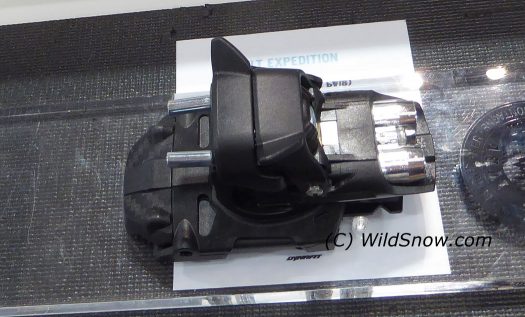
TLT Speed heel unit, has flip lifters, with a nice ‘heel flat on ski’ mode along with standard angles for the skin track.
Both new bindings hearken back to the original tech design in that they have non-adjustable vertical release tension due to the “U spring” providing vertical release. Here are the claimed numbers:
– TLT Speed, lateral release is adjustable 6-12, vertical release is fixed at 9. (Updated May 2017)
– TLT Speedfit, lateral release adjustable 5-10, vertical release is fixed at 6.
I was assured that swap springs to adjust vertical release will NOT be an option. Would you agree that’s interesting?
In fact, I find this more than interesting. Dynafit’s confidence in marketing two bindings with limited release adjustment indicates a healthy user base of skiers who simply want simplicity, reliability and lack of mass. Despite the past few season’s heavy PR spreech about “safety” and “TUV,” look what happened. Along those lines, one has to wonder if it’s really all that hard to keep both upward and side release adjustable in a minimalist tech binding, such as Dynafit Speed Radical. Perhaps it’s not that tough, and just costs a bundle. Main thing, be aware that some of these bindings have fixed release values that may be higher or lower than you prefer.
Word I got is that the TLT Speed will eventually replace the Speed Radical. I find that odd, as the Speed Radical vertical and lateral release are adjustable, making it a substantially different binding than something with fixed vertical release that’s clearly too stiff for smaller skiers.
Also in bindings, Dynafit tweaked the Radical 2.0 into the Radical ST Rotation. This version has a clever “Hub Centering” device built into the rotating toe that pretty much eliminates the confusion many people experience while clicking into the 2.0 and having the to rotate off-center. This binding appears virtually identical to the Radical 2.0, which we suspect it’ll eventually replace.

Hub centering component visible on underside of ST Rotation binding toe. It’s the curved component to right in photo.
Dynafit’s new look is nowhere more apparent than in their ski line for 2017-2018. Gone are all the peak names that some of us never did learn how to spell. I liked the spirit of those, but admit the line was beginning to feel scattered. The skis now have a unified looking color style, and are named with their category and width. Examples: Tour 96, Beast 108 and so on. Quite a few planks will be available in the sub 100 mm width class, per trends in ski touring gear. We’ll be all over those as the testing season progresses.
Bonus point: I’ve covered this in past blog posts, but the guys at OR Show reminded me that a primary difference between Radical 2.0 and prior Dynafit bindings is the 2.0 has what they all “bayonet locking” of the heel unit into the base plate. What this does is eliminate asking the center post inside the heel unit to act as the stabilizer and fixation for the heel unit housing. Now that a few years of real-world testing are complete, we’d agree this is a good improvement, duly noted.
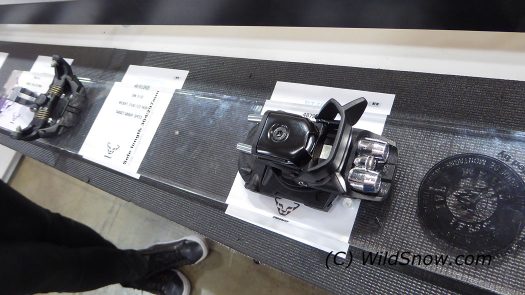
Another view of the TLT Speed, overall super clean looking, and we like the lack of brightness. Again, note this offers a nice heel-flat-on-ski touring mode, as well as low stack height in downhill ski mode. Ramp angle is unknown at this time but it’s probably fine.
WildSnow.com publisher emeritus and founder Lou (Louis Dawson) has a 50+ years career in climbing, backcountry skiing and ski mountaineering. He was the first person in history to ski down all 54 Colorado 14,000-foot peaks, has authored numerous books about about backcountry skiing, and has skied from the summit of Denali in Alaska, North America’s highest mountain.

